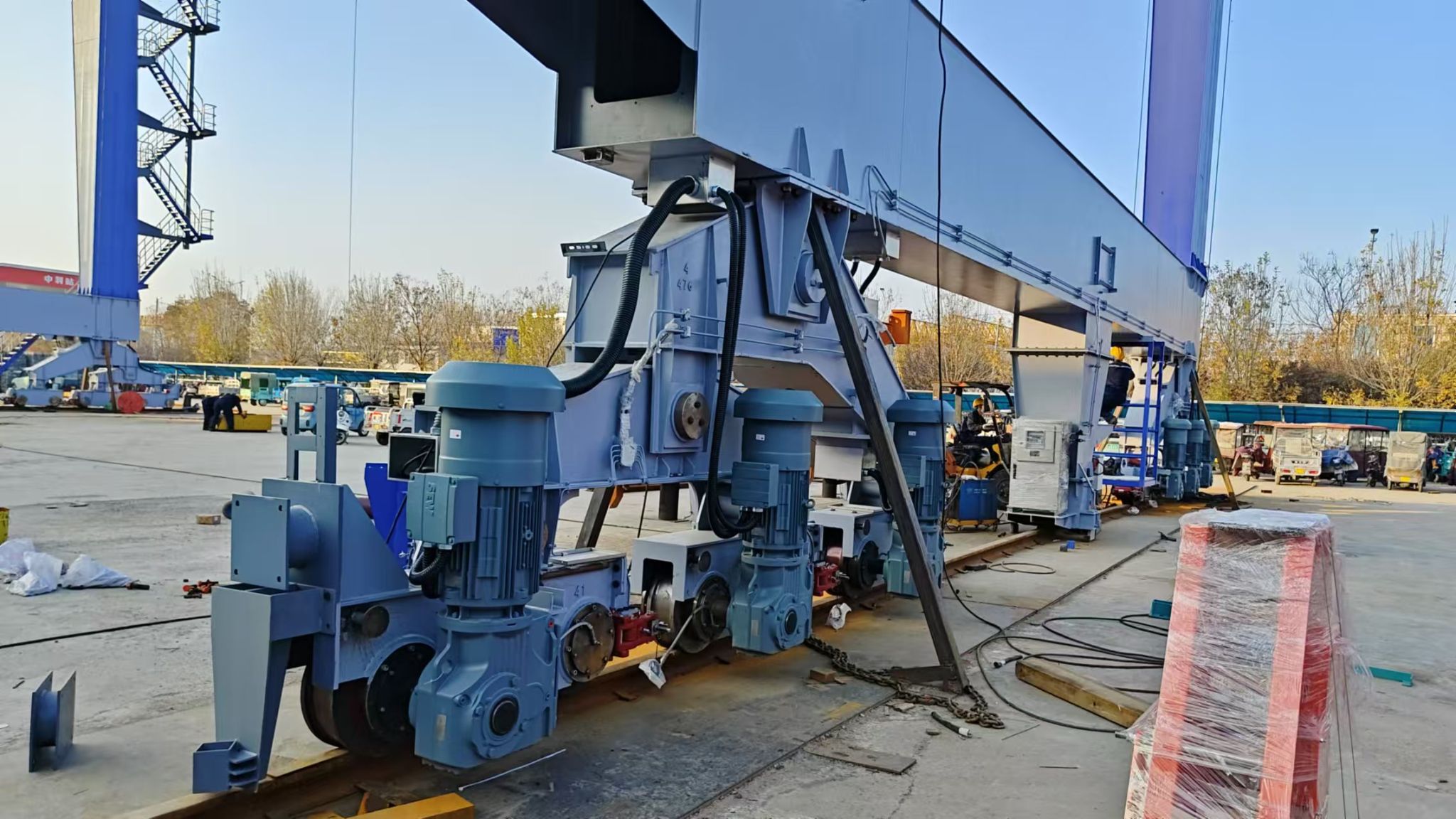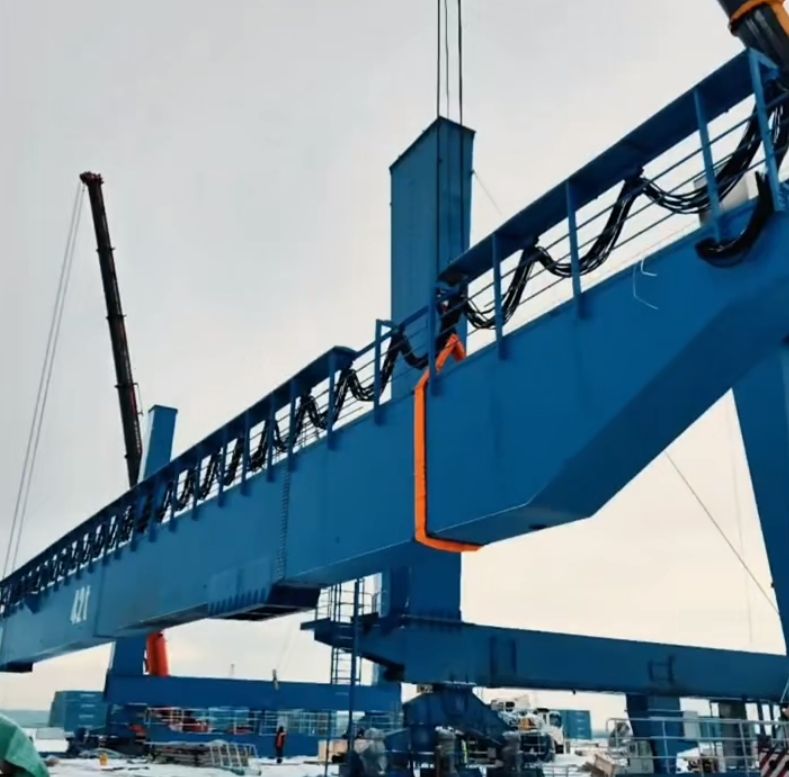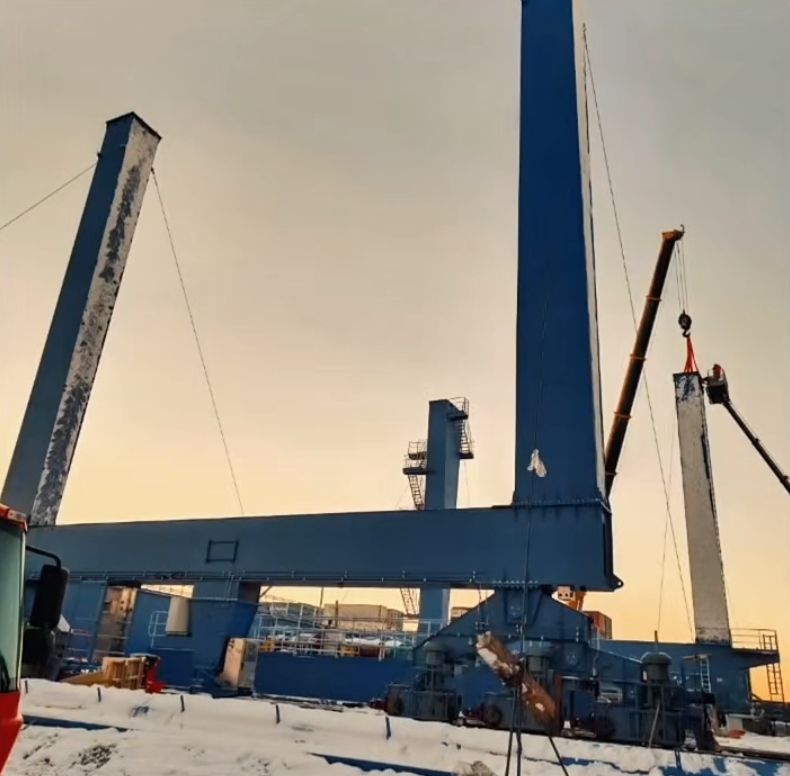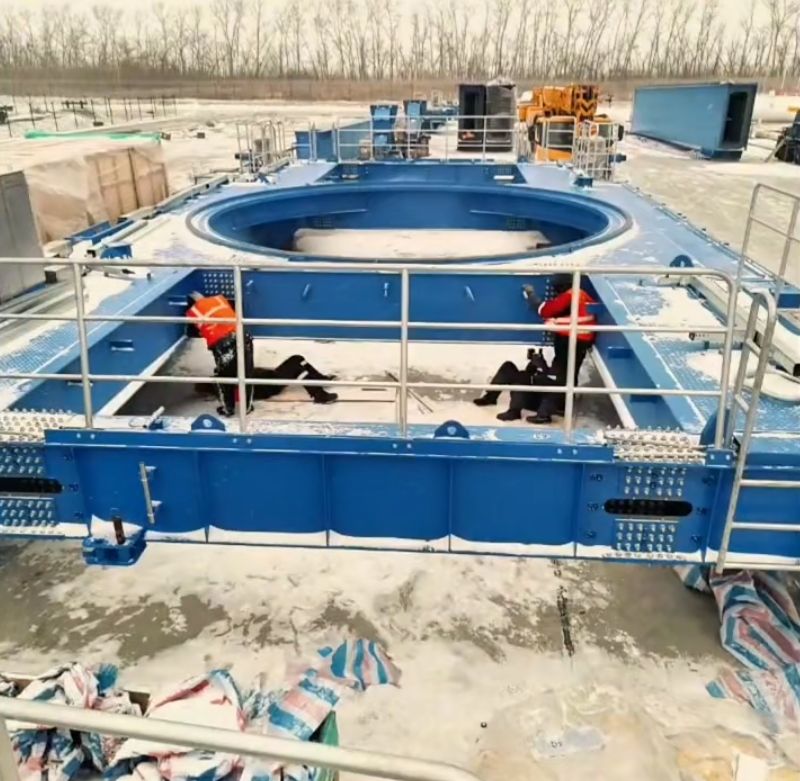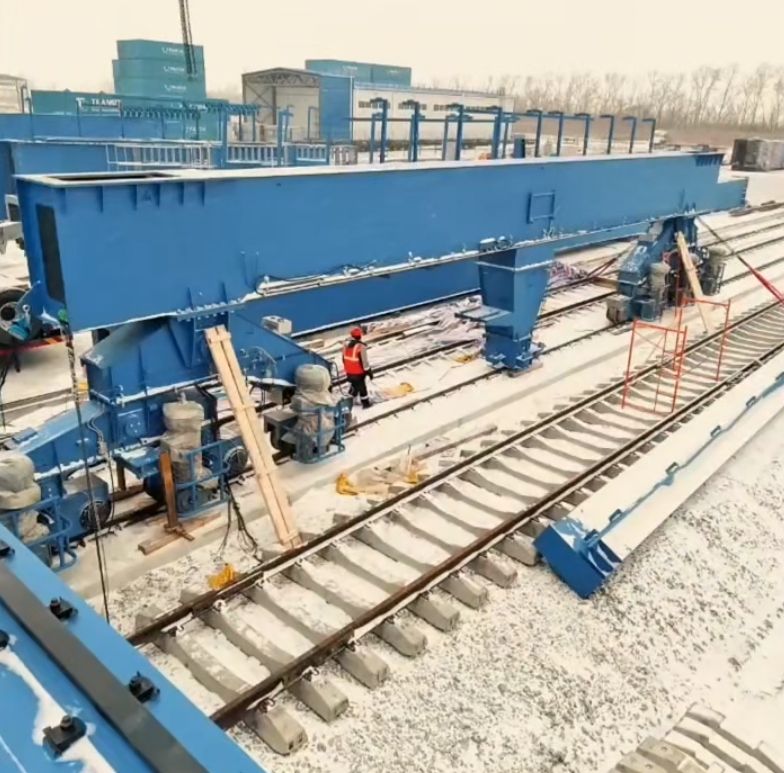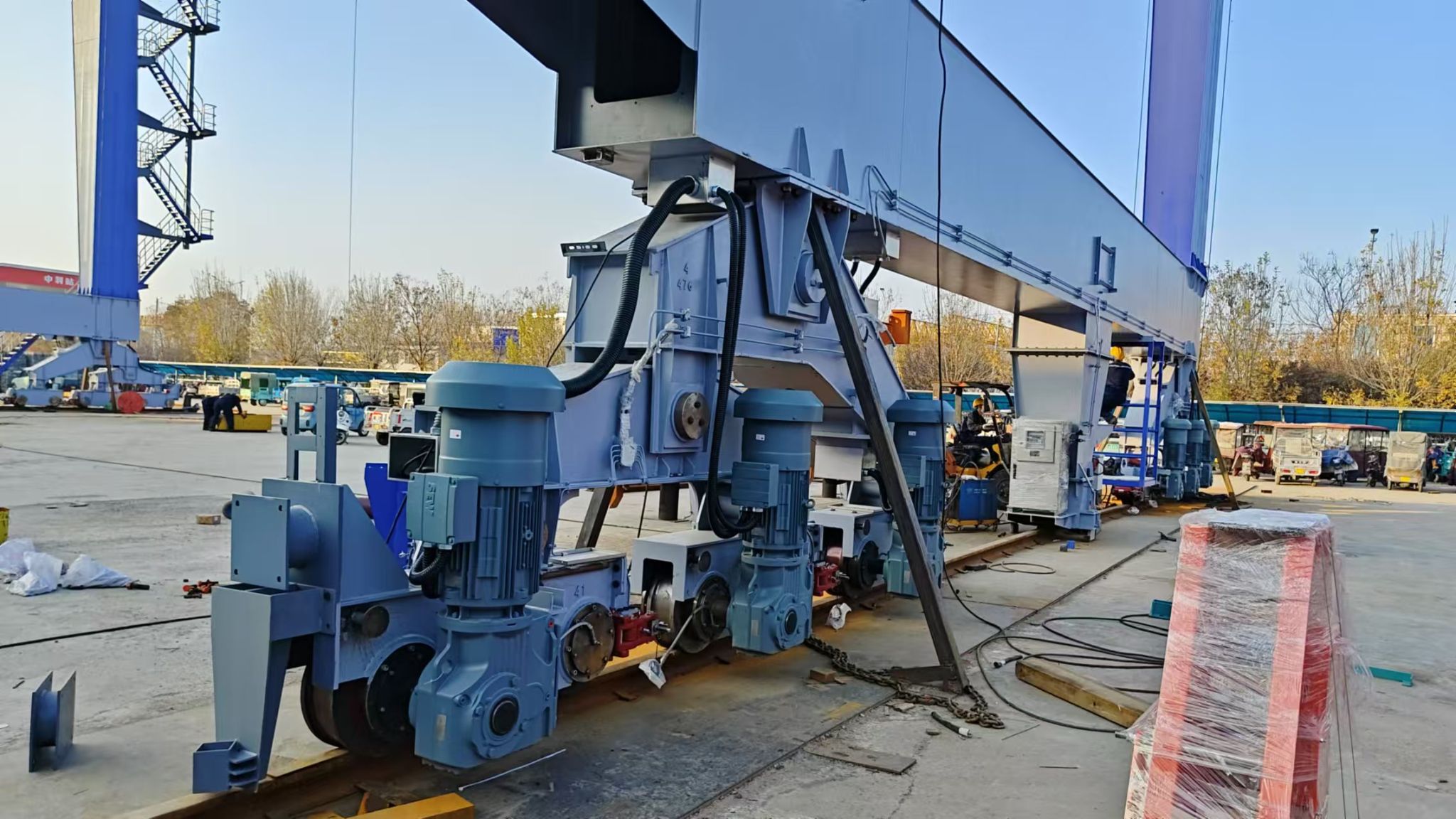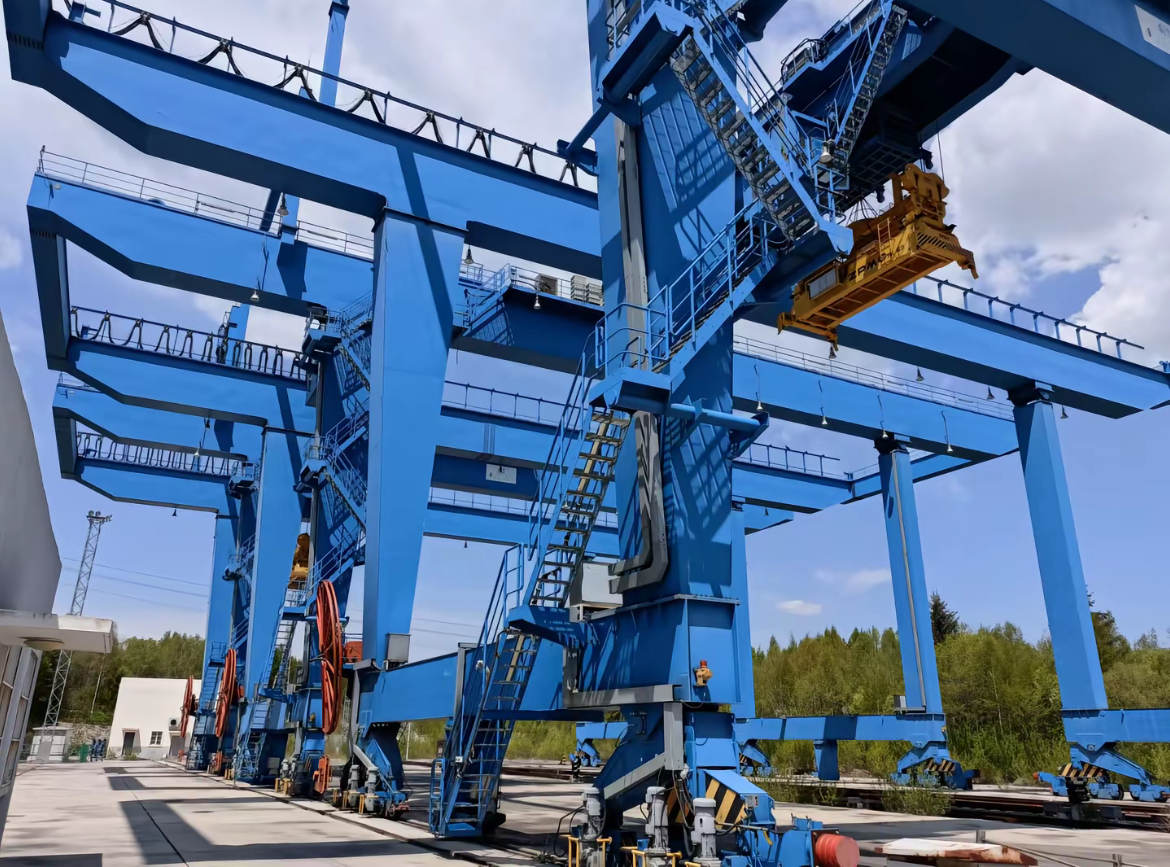Overview
Container Gantry Crane (RMG) is a large-scale lifting equipment designed for container yards. It is widely used in container loading and unloading, stacking and transshipment operations in port terminals, railway freight yards, logistics parks and large manufacturing enterprises.
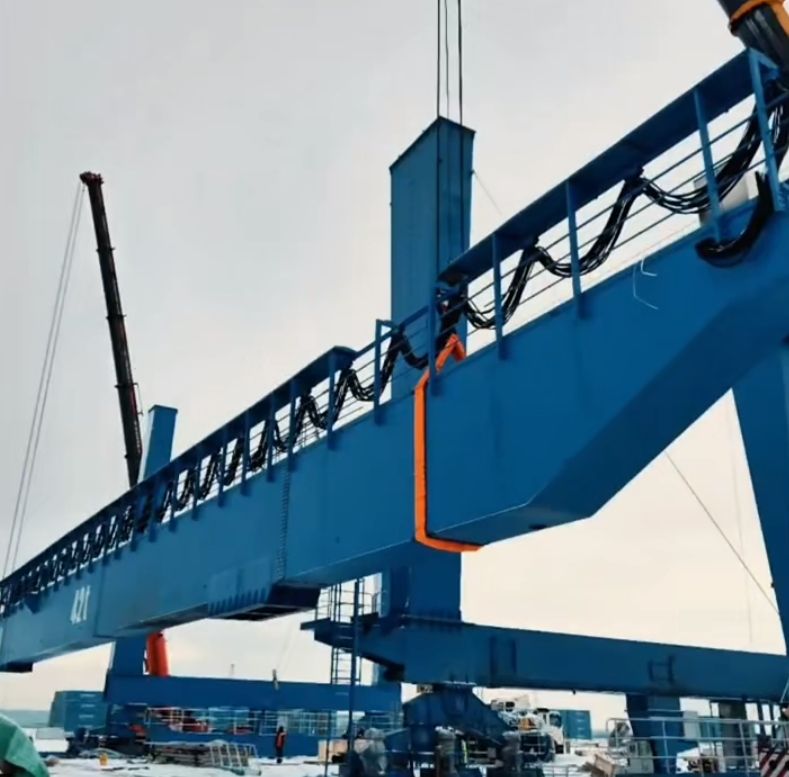
Product structure composition
1. The double-beam or single-beam gantry made of high-strength steel is stable in structure, strong in wind resistance, and adaptable to harsh outdoor environments.
2. The span of the gantry can be customized according to user needs (usually 20-50 meters) to meet the requirements of different yard layouts.
3. The gantry legs are designed as rigid legs or flexible legs, and the bottom is equipped with a trolley travel mechanism to support rail or tire movement (tire type is also called RTG, which needs to be explained separately).
1. The main lifting system is equipped with a high-power motor and a reducer to support the rapid lifting of 20-50 tons of standard containers (expandable to double-box slings).
2. The variable frequency speed regulation technology is adopted to achieve smooth and accurate lifting and lowering processes to avoid container shaking.
1. The trolley moves horizontally along the main beam of the gantry, equipped with anti-collision sensors and positioning systems to ensure accurate stacking of containers (error ≤±5mm).
2. The operating speed can reach 50-120 meters/minute, improving work efficiency.
1. The rail-mounted crane moves longitudinally along the preset track through motor drive; the tire-mounted (RTG) is equipped with a diesel generator or a hybrid power system for flexible transfer.
2. The integrated automatic correction function prevents safety risks caused by track deviation.
1. Intelligent human-machine interface (HMI), supporting touch screen operation, remote monitoring and fault diagnosis.
2. Optional automation system (ASC) to achieve unmanned operation and seamless connection with TOS (terminal operating system).
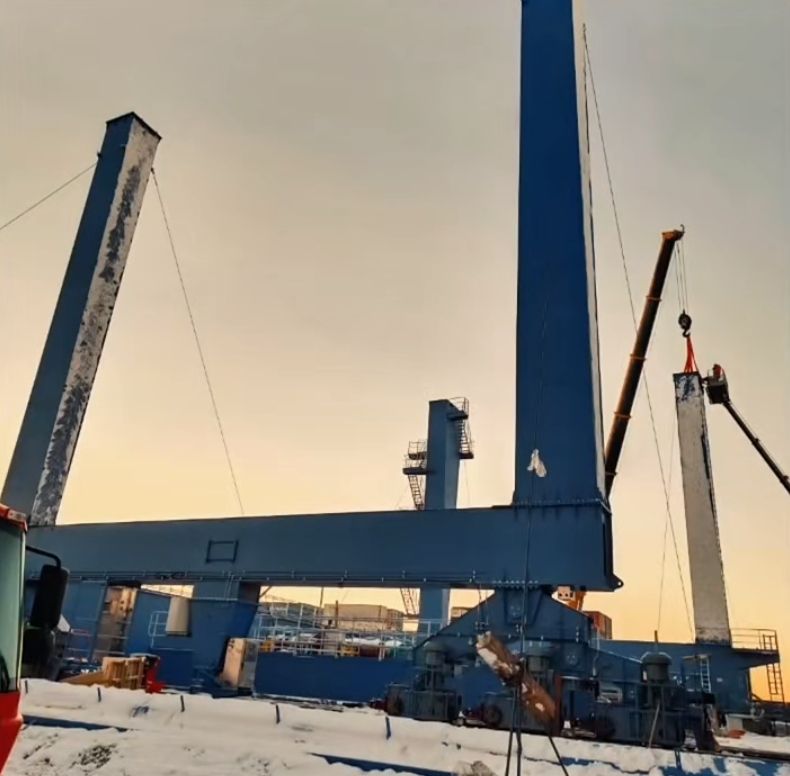
Technical parameters (example)
| Technical Parameters | RMG-Ⅰ (Suitable for medium-sized yards) | RMG-Ⅱ (Suitable for large hubs) |
|---|
| Rated lifting capacity (including spreader) | 40.5 t | 50 t |
| Span | 26 m (accommodating 6 rows of containers + passage) | 40 m (accommodating 10 rows of containers + passage) |
| Lifting height (above/below rail) | 12 m / 1.5 m | 18 m / 2 m |
| Lifting speed (full load/no load) | 12 m/min / 20 m/min | 15 m/min / 24 m/min |
| Trolley traveling speed | 40 m/min | 50 m/min |
| Crane traveling speed | 30 m/min | 40 m/min |
| Working class | A6 | A8 |
| Power supply | 380V/50Hz three-phase AC | 660V/50Hz three-phase AC (customizable) |
| Spreader adaptation | 20'/40'/45' container automatic telescopic spreader | 20'/40'/45' container with rotating spreader (±180°) |
| Wind resistance | Working condition ≤20.7 m/s (Level 8 wind) | Working condition ≤24.5 m/s (Level 9 wind) |
| Temperature adaptation range | -10℃~50℃ | -25℃~40℃ (low-temperature enhanced type) |
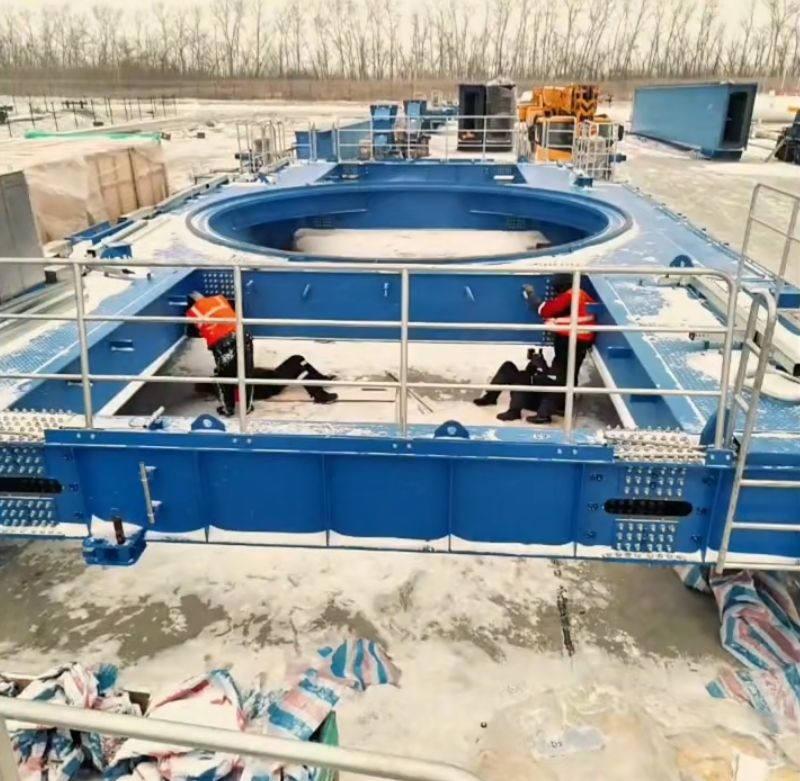
Applications
Used for rapid transfer of containers between the terminal front and the yard, supporting high-density stacking (5-8 layers).
Realize seamless connection between containers between trains and trucks, and improve multimodal transport efficiency.
In-plant lifting and storage management of heavy equipment and raw material containers.
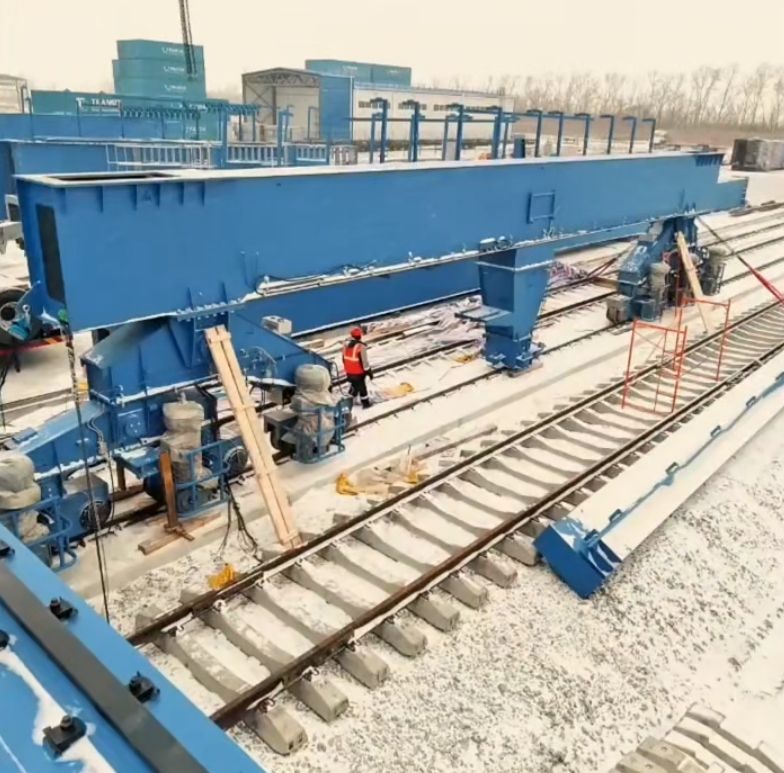
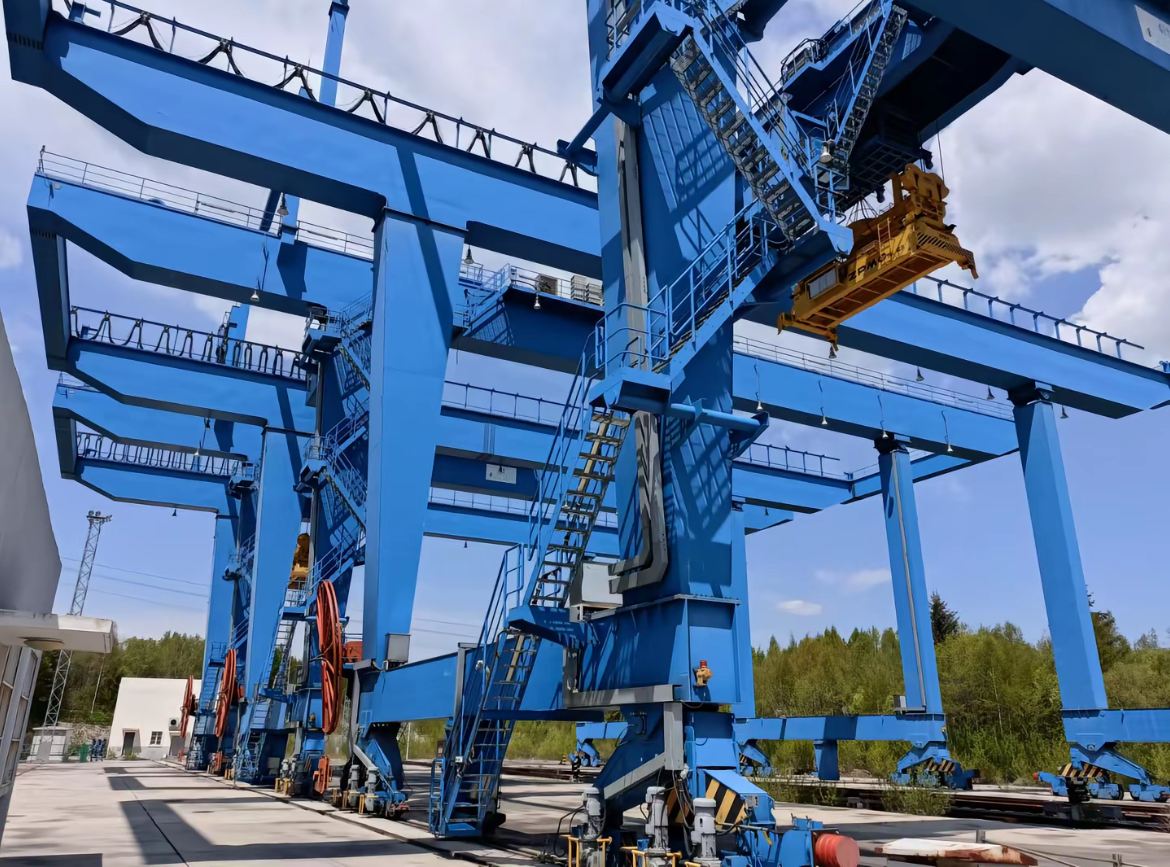
After-sales service commitment
Global technical support: 24-hour response, providing installation and commissioning, operation training, and regular inspection services.
Spare parts supply: Global inventory network of core components to ensure continuous operation of equipment.
Life cycle management: Provide equipment upgrade and transformation solutions to extend service life.
